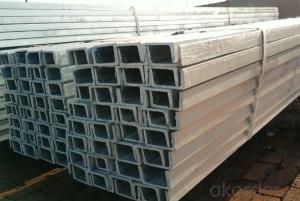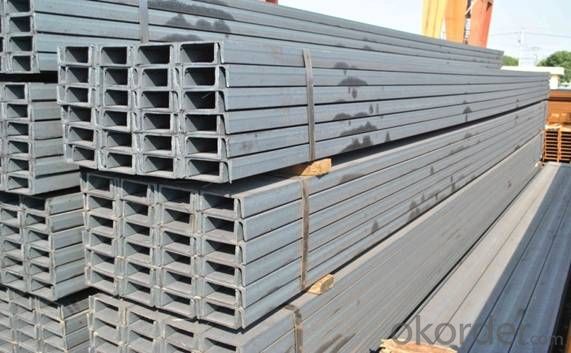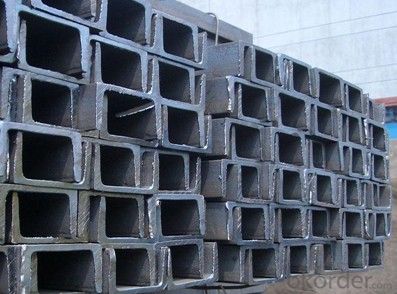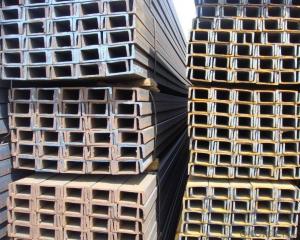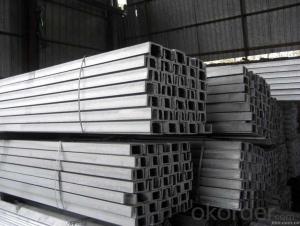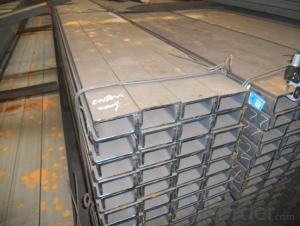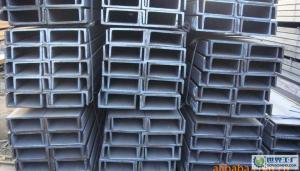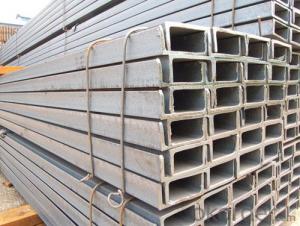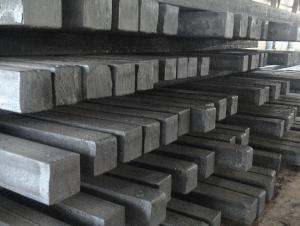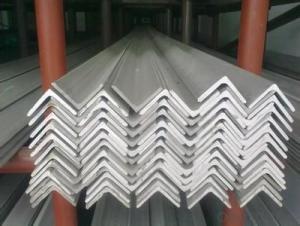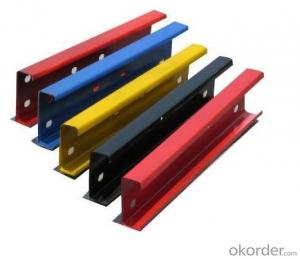U Channel JIS or GB or UPN 5MM-330MM Q235 Q345
- Loading Port:
- Tianjin
- Payment Terms:
- TT OR LC
- Min Order Qty:
- 25 m.t.
- Supply Capability:
- 20000000 m.t./month
OKorder Service Pledge
OKorder Financial Service
You Might Also Like
Product Description:
OKorder is offering U Channel JIS or GB or UPN 5MM-330MM Q235 Q345 at great prices with worldwide shipping. Our supplier is a world-class manufacturer of steel, with our products utilized the world over. OKorder annually supplies products to European, North American and Asian markets. We provide quotations within 24 hours of receiving an inquiry and guarantee competitive prices.
Product Applications:
According to the needs of different structures, Angle can compose to different force support component, and also can be the connections between components. It is widely used in various building structures and engineering structures such as roof beams, bridges, transmission towers, hoisting machinery and transport machinery, ships, industrial furnaces, reaction tower, container frame and warehouse etc
Product Advantages:
OKorder's Steel U Channel JIS or GB or UPN 5MM-330MM Q235 Q345 are durable, strong, and resist corrosion.
Main Product Features:
· Premium quality
· Prompt delivery & seaworthy packing (30 days after receiving deposit)
· Corrosion resistance
· Can be recycled and reused
· Mill test certification
· Professional Service
· Competitive pricing
Product Specifications:
Manufacture: Hot rolled
Grade: Q195 – 235
Certificates: ISO, SGS, BV, CIQ
Length: 6m – 12m, as per customer request
Packaging: Export packing, nude packing, bundled
Sizes: 25mm-250mm | ||||||||||
a*t | ||||||||||
25*2.5-4.0 | 70*6.0-9.0 | 130*9.0-15 | ||||||||
30*2.5-6.6 | 75*6.0-9.0 | 140*10-14 | ||||||||
36*3.0-5.0 | 80*5.0-10 | 150*10-20 | ||||||||
38*2.3-6.0 | 90*7.0-10 | 160*10-16 | ||||||||
40*3.0-5.0 | 100*6.0-12 | 175*12-15 | ||||||||
45*4.0-6.0 | 110*8.0-10 | 180*12-18 | ||||||||
50*4.0-6.0 | 120*6.0-15 | 200*14-25 | ||||||||
60*4.0-8.0 | 125*8.0-14 | 250*25 | ||||||||
FAQ:
Q1: Why buy Materials & Equipment from OKorder.com?
A1: All products offered byOKorder.com are carefully selected from China's most reliable manufacturing enterprises. Through its ISO certifications, OKorder.com adheres to the highest standards and a commitment to supply chain safety and customer satisfaction.
Q2: How soon can we receive the product after purchase?
A2: Within three days of placing an order, we will begin production. The specific shipping date is dependent upon international and government factors, but is typically 7 to 10 workdays.
Q3: What makes stainless steel stainless?
A3: Stainless steel must contain at least 10.5 % chromium. It is this element that reacts with the oxygen in the air to form a complex chrome-oxide surface layer that is invisible but strong enough to prevent further oxygen from "staining" (rusting) the surface. Higher levels of chromium and the addition of other alloying elements such as nickel and molybdenum enhance this surface layer and improve the corrosion resistance of the stainless material.
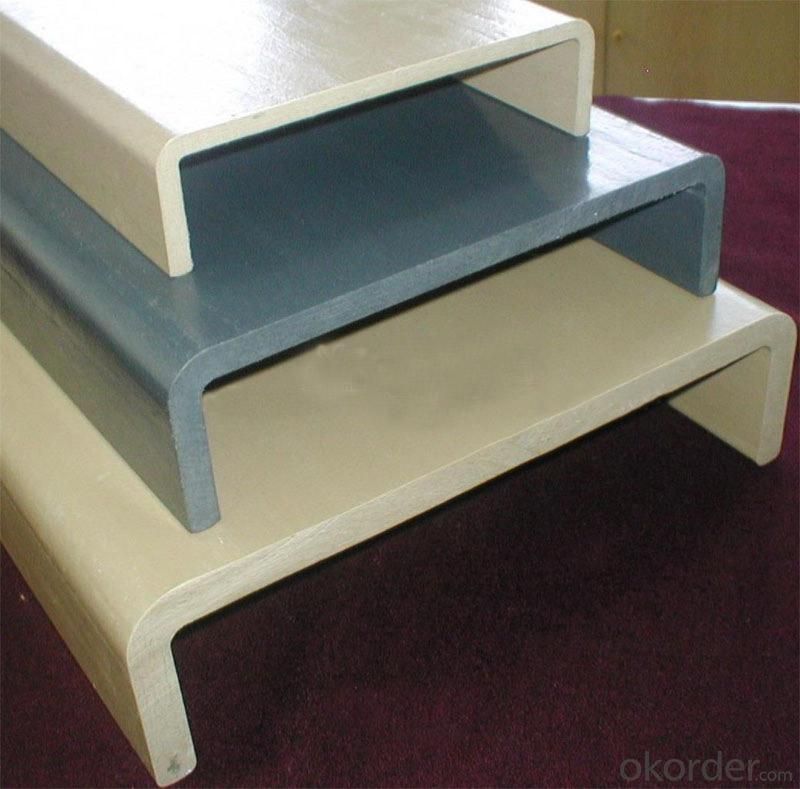
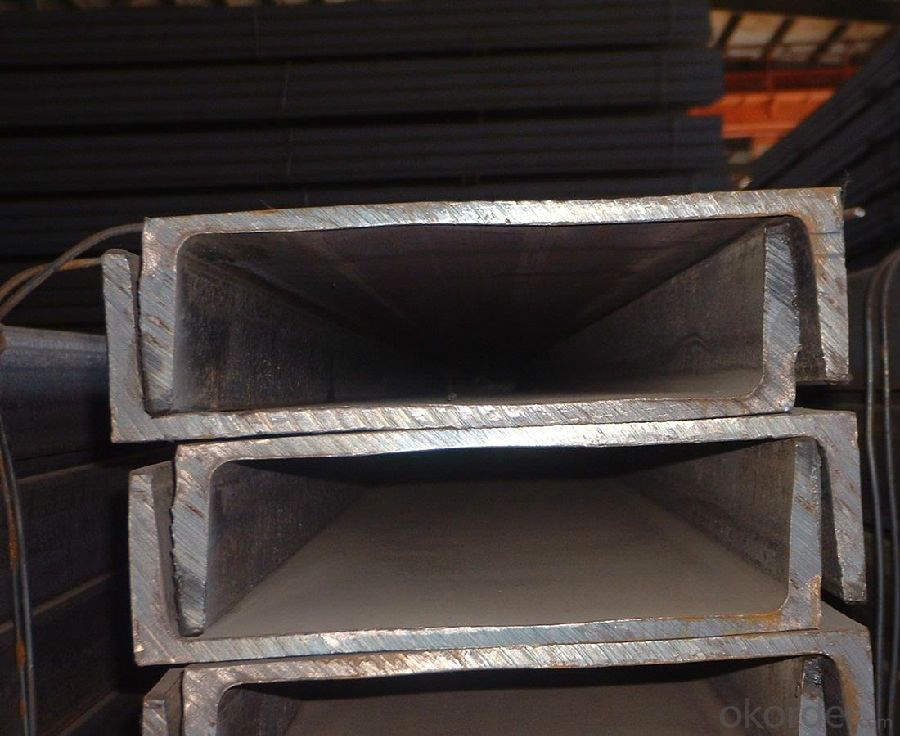
- Q: What are the different load distribution techniques for steel channels in floor systems?
- Some of the different load distribution techniques for steel channels in floor systems include continuous distribution, point distribution, and moment distribution. Continuous distribution involves evenly distributing the load along the length of the channel, while point distribution concentrates the load at specific points along the channel. Moment distribution accounts for the bending moments and distributes the load accordingly. These techniques help ensure efficient load distribution and structural integrity in steel channel floor systems.
- Q: Are steel channels fire-resistant?
- Yes, steel channels are generally considered to be fire-resistant. Steel has a high melting point and does not contribute fuel to a fire, making it a preferred material for construction in fire-prone areas. Additionally, steel channels can be further enhanced with fire-resistant coatings or insulation to provide even greater protection against fire damage.
- Q: How do steel channels perform under wind loads?
- Construction and engineering projects often utilize steel channels to provide stability and structural support. Steel channels excel in resisting wind loads due to their strength and rigidity. Wind loads exert forces on structures, including uplift and lateral forces. Steel channels possess high tensile strength, enabling them to withstand these forces without significant deformation or failure. These channels are designed to effectively distribute and transfer wind forces to the foundation or other structural elements. The performance of steel channels under wind loads is also influenced by their shape and cross-sectional design. The profile of a steel channel efficiently dissipates wind energy, reducing the risk of structural damage or failure. The open design of these channels minimizes wind resistance, further enhancing their ability to withstand wind loads. Furthermore, steel channels can be customized and engineered to meet specific wind load requirements based on geographic location. Engineers consider factors such as wind speed, direction, and exposure to determine the optimal size, shape, and spacing of steel channels. In conclusion, steel channels are highly dependable and effective in withstanding wind loads. Their high tensile strength, shape, and customization options make them an excellent choice for structures exposed to strong winds. Whether it be a bridge, building, or any other construction project, steel channels offer the necessary support and stability to withstand wind loads and maintain the structural integrity of the entire system.
- Q: What are the different tolerances for steel channels?
- The different tolerances for steel channels can vary depending on the specific industry standards and requirements. However, common tolerances for steel channels typically include dimensional tolerances for width, height, and thickness, as well as straightness and twist tolerances. These tolerances ensure the accuracy and consistency of the steel channels' dimensions, allowing for proper fit and function in various applications.
- Q: Are steel channels available in non-standard sizes?
- Yes, steel channels are available in non-standard sizes. While standard steel channels follow specific dimensions and weight requirements set by industry standards, there are various options for obtaining non-standard sizes. Custom fabrication services provided by steel manufacturers or metalworking shops can create steel channels according to specific size requirements. These custom channels can be manufactured with unique dimensions, lengths, and cross-sectional shapes to meet the specific needs of a project or application. It is important to communicate the desired non-standard size to the manufacturer or supplier to ensure the creation of a customized steel channel.
- Q: Can steel channels be used for creating storage racks or shelving units?
- Yes, steel channels can certainly be used for creating storage racks or shelving units. Steel channels are known for their strength and durability, making them ideal for supporting heavy loads. They can be easily fabricated and assembled to create sturdy and long-lasting storage solutions. The versatility of steel channels allows for customization and adaptation to specific storage requirements, such as adjustable shelving heights or different rack configurations. Moreover, steel channels can withstand challenging environments, including warehouses, garages, or industrial settings, ensuring the stability and safety of the storage racks or shelving units.
- Q: What are the disadvantages of using steel channels?
- There are a few disadvantages of using steel channels in certain applications. Firstly, steel channels tend to be heavy and bulky, which can make them difficult to handle and transport. This can add to the overall cost and complexity of a project. Additionally, steel channels are prone to corrosion and rusting, especially when exposed to moisture or harsh environmental conditions. This can lead to a decrease in structural integrity and a shorter lifespan for the channels. Regular maintenance and protective coatings may be required to mitigate this issue. Another disadvantage is that steel channels have limited versatility in terms of shape and size. They are typically available in standard shapes and sizes, which may not always be suitable for specific design requirements. Customization options can be limited and may come with additional costs. Furthermore, steel channels can be relatively expensive compared to other materials, especially if they are made from high-quality steel alloys. This can make steel channels less cost-effective for certain projects, especially when there are alternative materials that can fulfill the same purpose at a lower cost. Lastly, steel channels are poor insulators of heat and electricity. In applications where thermal or electrical conductivity is a concern, alternative materials may be more suitable. Overall, while steel channels offer many advantages such as strength and durability, it is important to consider these disadvantages before deciding to use them in a particular application.
- Q: How are steel channels protected against corrosion?
- Steel channels are protected against corrosion through various methods such as galvanization, coating with protective paints or primers, and applying corrosion inhibitors.
- Q: How do steel channels contribute to the overall cost-effectiveness of a building?
- Steel channels contribute to the overall cost-effectiveness of a building by providing structural support and reducing the need for excessive materials. These channels are versatile and can be easily fabricated to fit specific requirements, which reduces waste and construction time. Additionally, steel channels have high strength-to-weight ratio, allowing for lighter building designs and lower transportation costs. Their durability and resistance to corrosion also result in long-term cost savings by minimizing maintenance and replacement expenses.
- Q: What are the common maintenance requirements for steel channels?
- Steel channels, like any other steel structures, require regular maintenance to ensure their longevity and optimal performance. Some of the common maintenance requirements for steel channels include: 1. Regular cleaning: Steel channels should be cleaned regularly to remove dirt, dust, and other debris. This can be done using a mild detergent and water solution, followed by rinsing with clean water and drying with a soft cloth. Avoid using abrasive cleaners or scrub brushes that can damage the surface. 2. Inspection for corrosion: Corrosion is a common issue with steel channels, especially in areas with high humidity or exposure to moisture. Regularly inspect the channels for signs of rust or corrosion and address any issues promptly. Use a wire brush or abrasive pad to remove any surface rust, and apply a suitable rust inhibitor or paint to prevent further corrosion. 3. Lubrication of moving parts: If the steel channels have moving parts, such as sliding doors or windows, it is important to lubricate them regularly to ensure smooth operation. Use a lubricating oil or grease specifically designed for steel to prevent friction and wear. 4. Check for structural integrity: Periodically inspect the steel channels for any signs of damage or structural issues. Look for cracks, dents, or any deformities that may compromise the strength and stability of the channels. If any issues are found, consult a professional for repair or replacement. 5. Paint touch-ups: Over time, the paint on steel channels may chip, fade, or peel. Regularly inspect the paintwork and touch up any areas that require attention. This will not only enhance the aesthetic appeal but also provide an additional layer of protection against corrosion. 6. Proper drainage: Ensure that the steel channels have proper drainage systems in place to prevent the accumulation of water. Standing water can lead to corrosion and other structural issues. Clear any debris from drains and gutters to ensure proper water flow. By following these common maintenance requirements, steel channels can be kept in good condition, ensuring their durability and functionality for years to come.
Send your message to us
U Channel JIS or GB or UPN 5MM-330MM Q235 Q345
- Loading Port:
- Tianjin
- Payment Terms:
- TT OR LC
- Min Order Qty:
- 25 m.t.
- Supply Capability:
- 20000000 m.t./month
OKorder Service Pledge
OKorder Financial Service
Similar products
Hot products
Hot Searches
Related keywords
